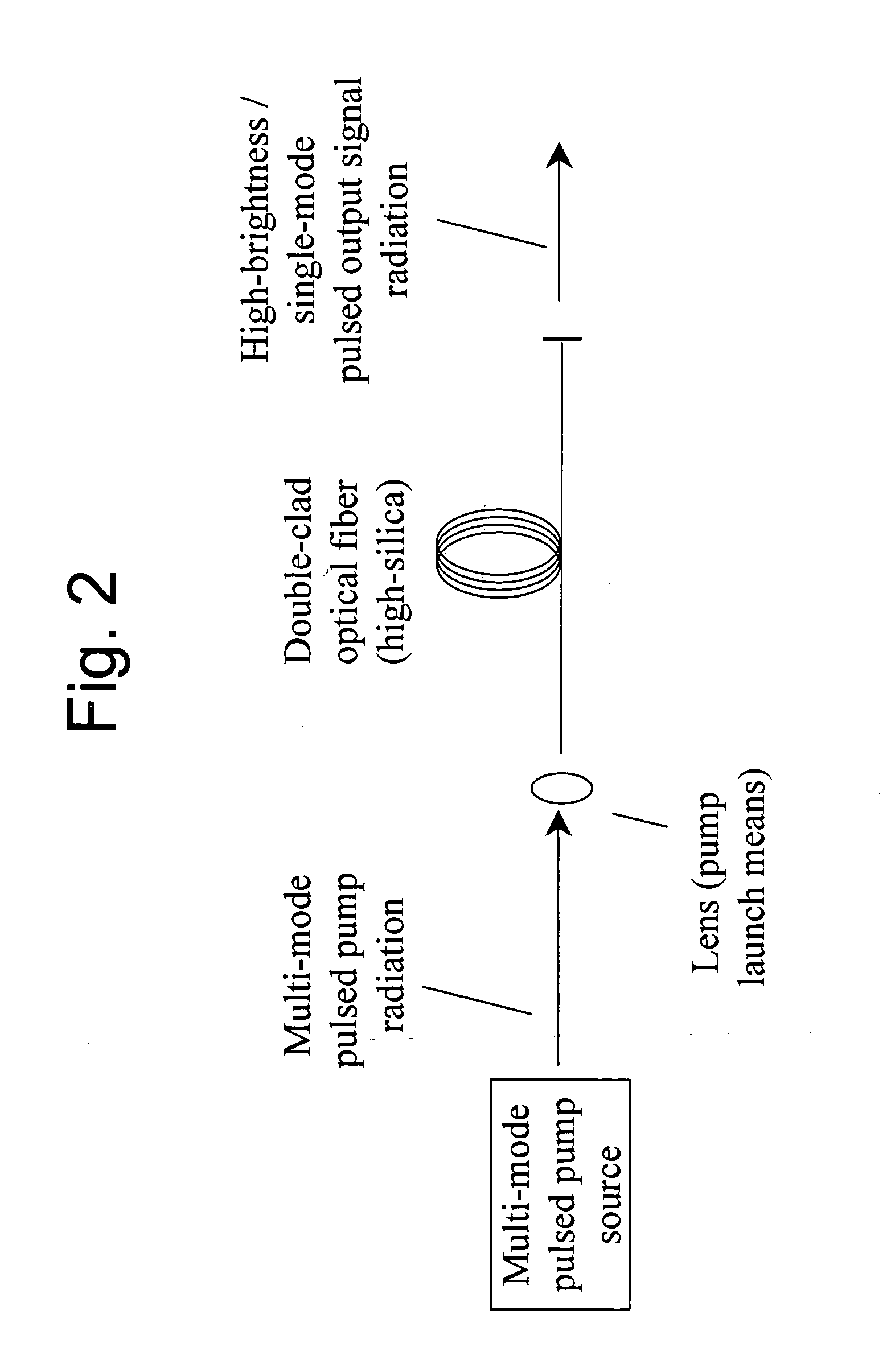Optical device with immediate gain for brightness enhancement of optical pulses
a technology of optical pulses and optical amplifiers, applied in the field of pulsed optical amplifiers and light sources, can solve the problems of inability to brightness enhance pulsed radiation, inability to achieve the effect of pulsed radiation brightness enhancement, and inability to achieve the effect of enhancing the efficiency of conversion and good thermal management properties
- Summary
- Abstract
- Description
- Claims
- Application Information
AI Technical Summary
Benefits of technology
Problems solved by technology
Method used
Image
Examples
further example embodiment
FIG. 9 illustrates an embodiment is a synchronously pumped pulsed laser, similar to FIG. 1 in which a Q-switched Er-Yb co-doped fiber laser is used as the pulsed pump source. Other pump sources can be used as well, including those doped with other rare earths and operating at different wavelengths. Though this pulsed pump source actually generates single-mode radiation at a relatively modest pulse energy level (˜40 μJ), a higher-energy, multi-mode pump source is preferred. The Q-switched fiber laser generated up to 320 mW of average output power at high repetition rates (e.g., 70 kHz). However, at such high repetition rates the pulse energy was small. Instead, the pump laser was used at a lower repetition rate where it generated pulses with energies up to 40 μJ with pulse durations down to 200 ns and with a time jitter of ˜5 ns. The lasing wavelength was 1565-1570 nm. The output from the fiber laser was free-space coupled into a double-clad Raman gain fiber (DCRF) via a dichroic mir...
PUM
 Login to View More
Login to View More Abstract
Description
Claims
Application Information
 Login to View More
Login to View More - R&D
- Intellectual Property
- Life Sciences
- Materials
- Tech Scout
- Unparalleled Data Quality
- Higher Quality Content
- 60% Fewer Hallucinations
Browse by: Latest US Patents, China's latest patents, Technical Efficacy Thesaurus, Application Domain, Technology Topic, Popular Technical Reports.
© 2025 PatSnap. All rights reserved.Legal|Privacy policy|Modern Slavery Act Transparency Statement|Sitemap|About US| Contact US: help@patsnap.com



